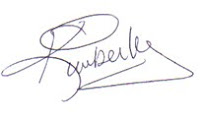What is Licensing in General?
Licensing is a fee you pay to use the images a certain way. Unless it is specifically written into the terms and conditions of the contract for your photography project, the copyright / ownership for those images remains with the photographer. This is why you can't take your child's school pictures, or your family picture to Kinkos or Walgreens/Walmart and make copies, you're violating the copyright (ownership) of the photographer.
A great scenario to illustrate how this works. You design a building. You provide a copy of the plans to the General Contractor to build that specific building. Just because he has the plans in his hands does not mean he owns them. It certainly doesn't give him the right to make copies of the plans and either give them away, sell them, or use them to build other buildings from those plans. If he wanted to do this, he would have to pay your firm for use of the plans on another building. I am sure that selling or giving away the plans wouldn't fly under any circumstances. The plans are your firm's creative, intellectual property. It is the exact same thing with a photographer.
What Is So Different about Editorial Usage?
Editorial usage is when you use images in an article you wrote for a print or online publications, periodicals, journals and that includes books and ebooks as well.
Who Wins in Editorial Usage?
- Publication - the better the images in their publication, the more they can charge for ads because the prestigue of their publication increases
- Architect - advertising that exponentially cheaper than paid advertising, and it has a lot more credibility
Cost - Exponentially Cheaper than a Paid Ad
To find out how much an ad is worth, go to the publications web site and follow the links for advertisers to the Media Kit.
Example:
2008 full page ad in Architectural Record is $16,980
Why Isn't Editorial Usage Included in the Estimate?
Many photographers don't like selling you usage that you don't need. It is an unnecessary expense for you, and makes their rates look necessarilyly higher than another photographer that isn't offering it. The same goes for advertising usage. This is by far the most expensive rate of usage, and honestly, it is rarely used by architects. So, being good business people, the photographer don't want to sell you more than you need.
Issues That May Arise
These happen when the publisher, architect, and photographer have different expectations.
You submit an article with images to a publication for consideration.
You think you can submit those images as part of the submission because you have purchased usage and it includes editorial.
The publication thinks you have paid for that usage already from the photographer.
So, no one has paid for usage of the images.
This can lead to a stand off that no one wins.
Securing an Editorial License
Generally, it is the publication that received the most benefit from usage of the images, so they contact the photographer directly and pay a fee reflecting the value the images contribute to the magazine's success. Factors included: size, quantity, and placement.
Unfortunately, the publisher may refuse to pay this fee. It is in the publisher's interest to license the images at the lowest cost. Some more unscrupulous publishers will play hard ball with the photographer, and even try to put your firm in the middle by trying to make the photographer out to be the problem party. One thing to know, it is very rare that a publication cannot pay for a license, and if you hear that it can't pay it could potentially be a sign that the publication is about to fold. Another claim a publication will make to help you put pressure on the photographer is that they never pay for editorial rights to images. This nearly always is untrue as the rights licenses is a very small part of their publication costs.
What If The Publication Refuses to Pay?
Option - your firm pays for the editorial-use license. be wary though, you will have no idea how an future publisher or art director at a publication may use the images, and the photographer would want to write the license to cover a wide range of possibilities and charge accordingly.
Value of a Photo Credit
Both architects and photographers have a lot in common here. Architects like seeing their names on the dedication placard, but they still expect to be paid for their design services. Photographers view a credit line the same way. It may increase their chances of future work, but it is not payment for work that has been completed.
Best Practice
When you start talking with a publisher about a story, be sure to address who will be responsible for securing the licensing rights for the supporting images.
Whether you were there or not, and whether we are your photographer on a project or not, if you have any questions or comments about commissioning architectural photography, please feel free to drop us a line anytime. We'd be happy to help!

Kimberly Blom-Roemer
Photographer
R2 Photography, LLC
r2-photography.com

Kimberly Blom-Roemer
Photographer
R2 Photography, LLC
r2-photography.com
866-722-9506


